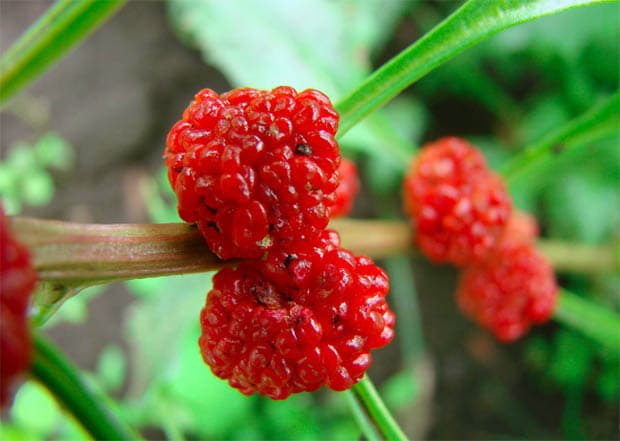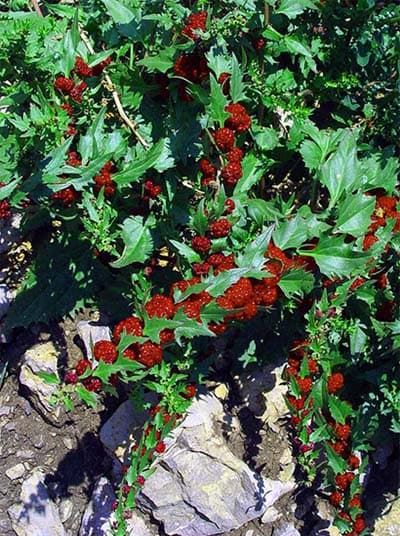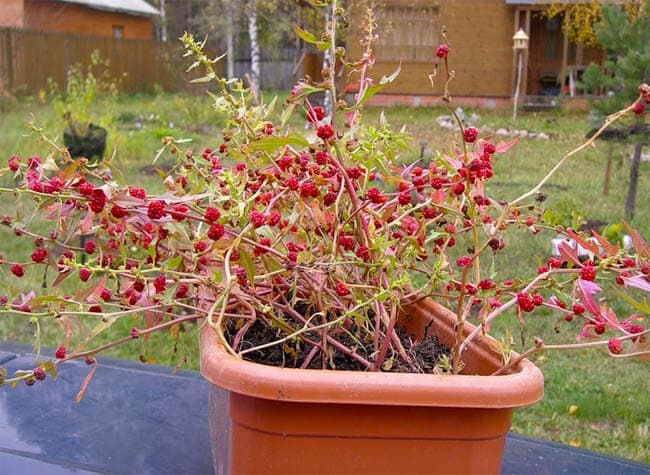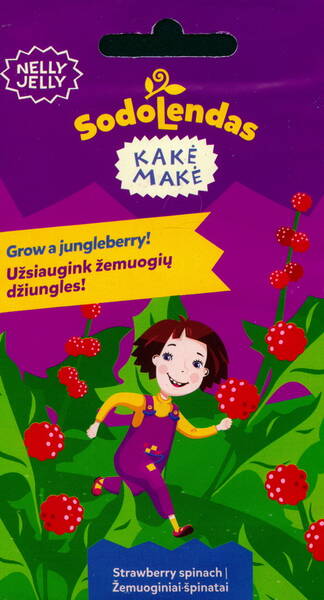The leader in the content of iron and unsaturated fatty acids. Decorative and edible.
Confound your friends at dinner parties with "fruit" in the salad bowl!
And you can eat the leaves of the same plant like spinach. And the roots like radishes too!
This very quick growing and amusing plant produces little red "strawberries" all the way along its stems.
1,0 g = 1000-1200 seeds.

Strawberry spinach develops quickly and forms powerful rosettes of light green spear-shaped leaves (7x6 cm) on long petioles, and then stems.
They branch well and as a result, bushes about 80 cm high are formed. After that, seedlings appear in the axils of the leaves, resembling beet seeds in appearance.
As they grow, they acquire a compressed-rounded shape and reach 2 cm in diameter (at the beginning they are orange-red, and as they mature, they become thick crimson, juicy and shiny, although, at the base, at the point of attachment, the orange color remains).
During this period, the plants look very beautiful. Under the weight of the crop, the shoots bend and require garters to the supports.
The taste of ripe berries is very pleasant and resembles mulberry or blackberry-raspberry hybrids. The berries ripen gradually, starting from the lower shoots, the first ones already 1.5 months after sowing. Harvesting can be carried out in several stages all summer until frost, as ripe berries do not crumble for a long time.
Strawberry spinach is very resistant to frosts and withstands temperature drops both in spring and autumn to minus 10°C. Heat also does not harm the plant.

Location: unpretentious.
Grows easily in any soil, in full sun or partial shade. However, it prefers a warm climate and fertile soil rich in calcium compounds.
Reproduction: by seeds: as soon as the soil thaws, the seeds are sown directly into the ground according to the scheme 40x40 cm, several seeds in one hole to a depth of 0.3 cm.
Before sowing, they sort it out, removing all the feeble and damaged ones, then pickle for 30 minutes in a weak solution of potassium permanganate.
This technique accelerates germination by 2-3 days. After watering, the soil in the holes is mulched with a thin layer of humus.
After the formation of two true leaves, the seedlings are thinned out, leaving one plant in each hole.
Extra planted in a free place, trying not to damage the roots.
Care: comes down to weeding, loosening the soil and watering.
The first feeding is carried out with a solution of ammonium nitrate (1 tablespoon per 10 liters of water), 1 liter per well, when the seedlings still had only cotyledon leaves.
Later (during the formation of the stems), wood ash is introduced, embedding it in moist soil.
If you plan to eat berries for food, then you can only feed with organic fertilizers.
Uses: This pretty plant can be used as an ornamental garden, wildflower garden or container arrangement.
Bushes reaching a height of 40 cm are very voluminous, as they form many shoots. Berries make good jam, delicious juices and compotes.
The leaves can be added to soups and salads.

STRAWBERRY SPINACH. Bot.syn.: Chenopodium foliosum.












